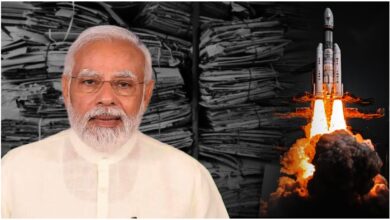Thirty-one years after Black Friday, remembering the Mumbai Blasts of 1993
Some of the most famous structures in the city, notably the Bombay Stock Exchange, were brought to their knees by the 1993 bombs that permanently altered Mumbai (then known as Bombay). On March 12, 1993, a sequence of eerie bomb explosions occurred in the afternoon, namely from 1:30 pm to 3:40 pm. At least 257 individuals lost their lives as a consequence of the horrific assaults, while hundreds more suffered injuries.

Dawood Ibrahim, an underground mobster, carried off the series of explosions with help from Tiger Memon. Memon allegedly permitted terrorist activity to take place in his Mumbai apartments and garage. The 1993 bombings were the first to employ RDX as an explosive and are regarded as one of the largest terror assaults to occur on Indian territory up until the 26/11 Mumbai attacks.
On March 12, 2024, the 31st anniversary of the Mumbai serial bombings in 1993 will occur. Here are the key facts regarding the explosions that you should be aware of as India remembers that terrible day from thirty years ago.
Mumbai Bomb Blasts of 1993: What Was the Cause?
When Ayodhya’s Babri Masjid was destroyed on December 6, 1992, it set off a national chain reaction of violence. Tiger Memon and Dawood Ibrahim plotted to carry out a terrorist assault in Mumbai to exact revenge for the destruction.
Following several meetings held both domestically and overseas, as well as the transfer of weapons and ammunition from Pakistan and Dubai, explosives were placed in Mumbai, resulting in a series of explosions that rocked India’s financial centre to its foundation.
The Bombay Stock Exchange building, the Masjid-Mandvi Corporation Bank Branch, Zaveri Bazaar, Fisherman’s Colony in Mahim Causeway, Plaza Cinema, Katha Bazaar, Century Bazaar, Hotel Sea Rock, and the Air India building were among the prominent locations that were targeted by terrorist attacks. The majority of the explosives were hidden in automobiles and scooters.
On March 12, at around 1:30 pm, the first explosion was seen in the Bombay Stock Exchange building’s basement. 50 individuals were murdered as a consequence of the 28-story building and the nearby buildings suffering total destruction.
More explosions were reported from different parts of the city at regular intervals during the course of the following two hours, until 3:40 pm, causing widespread panic.
1993 Serial Blasts: Timeline of the Investigation
Tiger Memon and Dawood Ibrahim escaped law enforcement, but Yakub Memon, Tiger’s brother, was taken into custody in 1994. He was found responsible for planning, organizing, providing training, and purchasing vehicles for the explosions. In July 2007, he was found guilty and sentenced to death.
On July 30, 2015, Yakub was executed by hanging at Nagpur Central Jail.
The Mumbai Police Crime Branch and a Central Bureau of Investigation (CBI)-led Special Task Force apprehended around 193 individuals. A number of them passed away during the trial, which included around 140 of them. Of the suspected suspects who were put on trial, over 100 were found guilty and 23 were found not guilty.
In June 2017, a special court in connection with the 1993 Mumbai explosion case convicted six major suspects—Abu Salem, Mustafa Dossa, Mohammed Dossa, Firoz Abdul Rashid Khan, Karimullah Sheikh, and Tahir Merchant—of organizing these assaults.
The catastrophic explosions that occurred thirty years ago were a major factor in the explosion of D Company’s relationship with Pakistan’s Inter-Services Intelligence (ISI).
Tiger Memon and Dawood Ibrahim, the key suspects in the explosions, are still at large.







